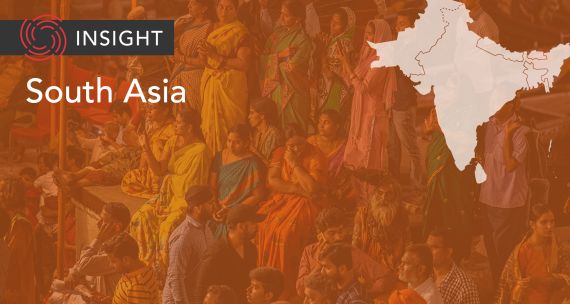Since 2013, the national-level air quality management policies in China have undergone multiple shifts in focus and approach, as the country moved from the first phase (between 2013 and 2017) of its efforts to combat air pollution into the second phase (between 2018 and 2020). The masterplans enforced in each phase, known as the Air Pollution Prevention and Control Action Plan and the Three-Year Action Plan for Winning the Blue Sky War respectively, define the scope of work for each phase.
- The shift in regional focus and the introduction of more detailed measures targeting the seasonal variation of air pollution in each key region reflect where the most challenging parts of the air quality problem lie. The Three-Year Action Plan for Winning the Blue Sky War names the Fen-Wei Plain region as one of the new key regions, replacing the Pearl River Delta. Since 2017, action plans are formulated on a yearly basis to effectively manage the peak season of air pollution in fall and winter, with general measures but also tailored tasks that suit the local needs in each key region. The Action Plan for the Comprehensive Management of Air Pollution in Fall and Winter 2018-2019 in the Fen-Wei Plain Area, for example, puts more emphasis on controlling dust that is generated not only from construction works and traffic but also from urban non-green-space areas.
- As opposed to policies in the previous phase that mainly focused on reducing emissions by industrial and energy structure reforms, more recent policies expand the scope to include optimization of transport and land-use structures, and with more flexible approaches. Instead of suggesting gas as the main replacement for coal, the Three-Year Action Plan for Winning the Blue Sky War emphasizes the importance of practicality in choosing the most appropriate alternative form of energy based on the actual context. Furthermore, the Action Plan for the Management of Diesel Truck Pollution is the first national-level policy that specifically targets controlling this predominant source of transport-related air pollution, with strict standards and very detailed inspection and maintenance procedures. There is also a trend of creating a synergy effect, such as between industrial and transport structure reforms, as reflected in the Opinions on Advocating the Implementation of Ultra-Low Emissions in the Steel Industry, which for the first time imposes transportation requirements on a particular industry.
- Cutting-edge technologies and scientific research are assigned a more important role in building the monitoring network infrastructure and addressing the root causes of pollution. The latest revised edition of the Law on the Prevention and Control of Atmospheric Pollution singles out promotion of applicable air-pollution-control technology and equipment as well as commercialization of scientific research findings as one of the law’s general principles; it also seeks to upgrade the monitoring network by incorporating newer technologies, such as aerial surveying and remote sensing. The Action Plan for the Management of Diesel Truck Pollution, on the other hand, looks to use information technologies such as big-data analysis to strengthen monitoring capacity for diesel truck emissions.
- Rules for the government bodies executing and implementing these policies are putting more weight on accountability and transparency. The 13th Five-Year Work Plan for the Control of Greenhouse Gas Emissions includes for the first time provisions on establishing an information disclosure system for greenhouse gas emissions, both at regional and corporate levels. The Three-Year Action Plan for Winning the Blue Sky War, as the overarching document, also specifies in each measure the leading and participating departments that are responsible for execution and implementation.
Read other briefs in this Eco-City Tracker Series:
Introduction: A Brief Summary of China’s General Environmental Protection Policies
Water Quality: A Brief Summary of China’s Water Protection Policies
Solid Waste: A Brief Summary of China’s Soil and Solid Waste Policies
For more information, see a list of recent national-level policies air pollution management:
- Opinions on Advocating the Implementation of Ultra-Low Emissions in the Steel Industry, 关于推进实施钢铁行业超低排放的意见, http://www.mee.gov.cn/xxgk2018/xxgk/xxgk03/201904/t20190429_701463.html
- Action Plan for the Management of Diesel Truck Pollution, 柴油货车污染治理攻坚战行动计划, http://www.mee.gov.cn/xxgk2018/xxgk/xxgk03/201901/t20190104_688587.html
- Action Plan for the Comprehensive Management of Air Pollution in Fall and Winter 2018-2019 in the Yangtze River Delta Region, 长三角地区2018-2019年秋冬季大气污染综合治理攻坚行动方案, http://www.mee.gov.cn/xxgk2018/xxgk/xxgk03/201811/t20181112_673371.html
- Law of the People's Republic of China on the Prevention and Control of Atmospheric Pollution (Revised in 2018), 中华人民共和国大气污染防治法(2018年修订), http://zfs.mee.gov.cn/fl/201811/t20181113_673567.shtml
- Action Plan for the Comprehensive Management of Air Pollution in Fall and Winter 2018-2019 in the Fen-Wei Plain Area, 汾渭平原2018-2019年秋冬季大气污染综合治理攻坚行动方案, http://www.mee.gov.cn/xxgk2018/xxgk/xxgk03/201810/t20181029_667650.html
- Action Plan for the Comprehensive Management of Air Pollution in Fall and Winter 2018-2019 in the Beijing-Tianjin-Hebei and Surrounding Areas, 京津冀及周边地区2018-2019年秋冬季大气污染综合治理攻坚行动方案, http://www.mee.gov.cn/gkml/sthjbgw/sthjbwj/201809/t20180927_630570.htm
- Three-Year Action Plan for Winning the Blue Sky War, 打赢蓝天保卫战三年行动计划, http://www.gov.cn/zhengce/content/2018-07/03/content_5303158.htm
- Regulation on the Administration of Ozone-Depleting Substances, 消耗臭氧层物质管理条例, http://zfs.mee.gov.cn/fg/xzhg/201805/t20180516_440444.shtml
- 13th Five-Year Work Plan for the Control of Greenhouse Gas Emissions, “十三五”控制温室气体排放工作方案, http://www.gov.cn/zhengce/content/2016-11/04/content_5128619.htm
- Air Pollution Prevention and Control Action Plan, 大气污染防治行动计划, http://www.gov.cn/zwgk/2013-09/12/content_2486773.htm
Prepared by the Sustainable Asia Team at the Asia Pacific Foundation of Canada:
Iris Jin
Senior Program Manager
Maya Xiaoting Liu
Post Graduate Research Scholar
Henry Shum
Junior Research Scholar



